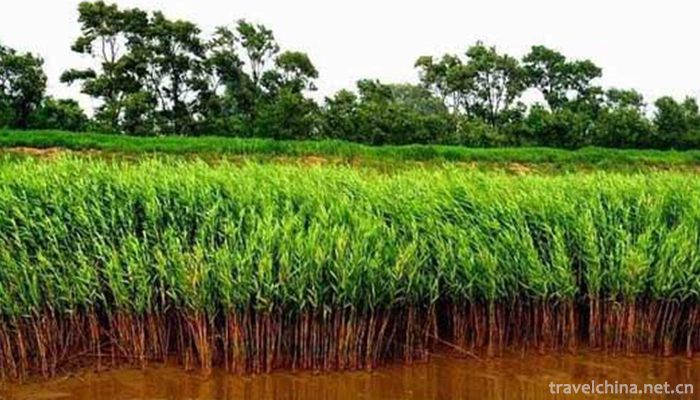Weihai Dingxiang Ecotourism Resort
Panjin Dingxiang Ecotourism Resort is located in the western suburb of Panjin City. The tourist area is mainly composed of Taiping River scenic belt, Bird Paradise Scenic Area and Reed Crab Beach Scenic Area. In the area, green trees, beautiful color, dense water network, rippling water, like a green emerald inlaid in the land of Western Liaoning. Taiping River Scenic Belt is a natural cross-strait forest belt formed by the Pinghe River through Dingxiang territory, where the beautiful water, exotic trees, twigs, birds, spiritual highlights of the two sides of the scenery.
Introduction
The scenic spot of Bird Paradise is an Ecological Park planting organic fruits, vegetables and seedlings, surrounded by water on three sides and boundless Reed Sea on the south, inhabiting more than 200 kinds of birds. Due to long-term artificial protection, the scenic spot of reed crab beach not only grows well, but also varies slightly. Introducing all kinds of animal species, mammals and birds, more are crabs, such as Eriocheir sinensis, Tianjin crab, etc.
National 4A Scenic Area.
Major attractions
Taiping River Scenic Area:
The Taiping River flows into the Liaohe River through more than ten miles of scenic spot. It is a quiet and deep Museum of ancient trees and giant trees. Wandering in the primitive forest, it is not only graceful and soft in the south of the Yangtze River, but also exotic.
Bird Paradise: Surrounded by water on three sides, the land is fertile and the ecological environment is very superior. Thousands of mu of woodland in the territory has become a paradise for birds and beasts, where more than 200 bird groups multiply and inhabit. Some members of the heron family are unique to the province. The world's endangered bird, the black-billed gull, is home to the Sinian crow. In the bird-watching building, we can enjoy the panorama of their happy life by electronic monitoring system. They can also pick all kinds of organic fruits and vegetables.
Reed Crab Beach: Located in the Delta where Liaohe River and Rounyang River meet, it belongs to the corner of the world's largest reed pond. Swamping Reed Sea with green onions,
The breeze comes slowly, the waves rise and fall, the sound of rustle, euphemism, birds gather, play and hunt. Wooden trestle road winding in the reed sea, foot trestle road, listening to the tide and bird watching, make people relaxed and happy. When the tide is high, the blue water is continuous and the undulating reed waves are green.
Colored brocades float in the wind. After the ebb tide, Chinese mitten crab, Tianjin thick crab and narrow mitten crab, like a divine soldier, quickly occupied the beach. Looking far, wooden houses, bridges, oil trees, scattered and delicately inlaid in the green waves, like beautiful pictures painted on the green carpet. Visitors can take boat trips, play crabs, fish crabs and taste crabs in the scenic area.
Tourism Information
Scenic Area Transportation
The scenic spot is 13 kilometers away from Panjin Railway Station and 50 kilometers away from Panjin Port. The Zhongxin and Shixin Highways crossing the scenic spot are connected with 102 and 305 National Highways. The Beijing-Shenzhen and Panhai Expressways encircle the scenic spot. The No. 6 passenger trains of Panjin City directly depart from the scenic spot of Panjin Railway Station.
Tour Tips
Panjin is a warm temperate continental semi-humid monsoon climate area. Its climatic characteristics are: distinct seasons, hot and rainy season, suitable temperature, abundant light. The average annual temperature is 8.6 C, and the best travel time is 9 and 10 months.
Opening Hours
All day
Tickets for Reed Crab Beach
50 yuan

0 Questions
Ask a Question
Your email address will not be published.